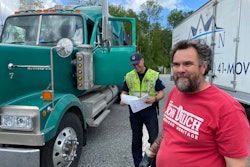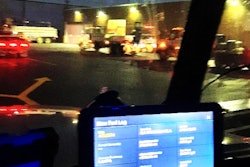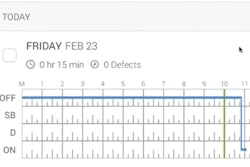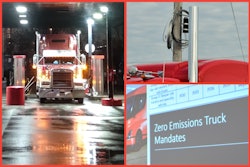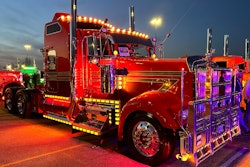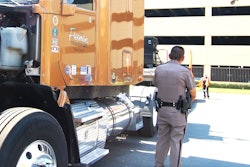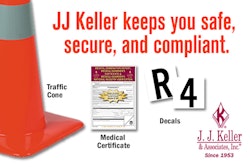Headed into the annual Roadcheck inspections event -- scheduled for May 17-19, or Tuesday-Thursday next week -- a plurality of owner-operators responding to our preparations poll this week noted a time-honored approach to getting ready for an increased chance of inspection, as you can see here.
At the Mid-America Trucking Show back in March, I sat in on Wheel End Specialist Brian Beathard's wheel-end training session, meant for both maintenance pros as well as any truck owner with an interest in more fully understanding the inner workings of their equipment -- I'd say that describes any of you reading this, of course, which is good timing ahead of a Roadcheck blitz set to focus on wheel ends.
During the presentation, Beathard, with wheel-seal/wheel-end-components manufacturer RevHD, asked a version of this question: True or false: A moist or damp seal is OK?
Beathard then answered his own question by splitting the difference: "Unfortunately," he said, "it can often depend on the DOT inspector," as some are too quick to interpret lube on the seal as a violation of 49 CFR 396.5(b), indicating a leak. From Beathard's point of view, though, a moist or damp seal is OK, given most engineers prefer a seal to be lubricated before being seated. "It's when you have dripping or about-to-be-dripping [lube] that you have issues," and a true violation, Beathard said.
Last year, inspectors around the nation wrote upward of 94,000 396.5(b) violations, close to 3% of all vehicle-related violations recorded. Not all were for leaky wheel seals, but the Federal Motor Carrier Safety Administration has routinely emphasized hub and seal leaks as among the very most common of all maintenance-related violations.
An online-tutorial-style version of Bethard's MATS presentation is available at the RevHD website, and you can also catch a video of the presentation itself at the MATS website and on the MATS Youtube channel -- in it, he identified some of most-common reasons for wheel-seal failure. Quite literally a hundred different things can make a wheel seal leak, he said, as “the seal is the weakest link in the chain” that is the wheel end. Engineers designed them that way, so that the seal fails before the other components, essentially, offering opportunities for owners to correct issues before catastrophe occurs.

